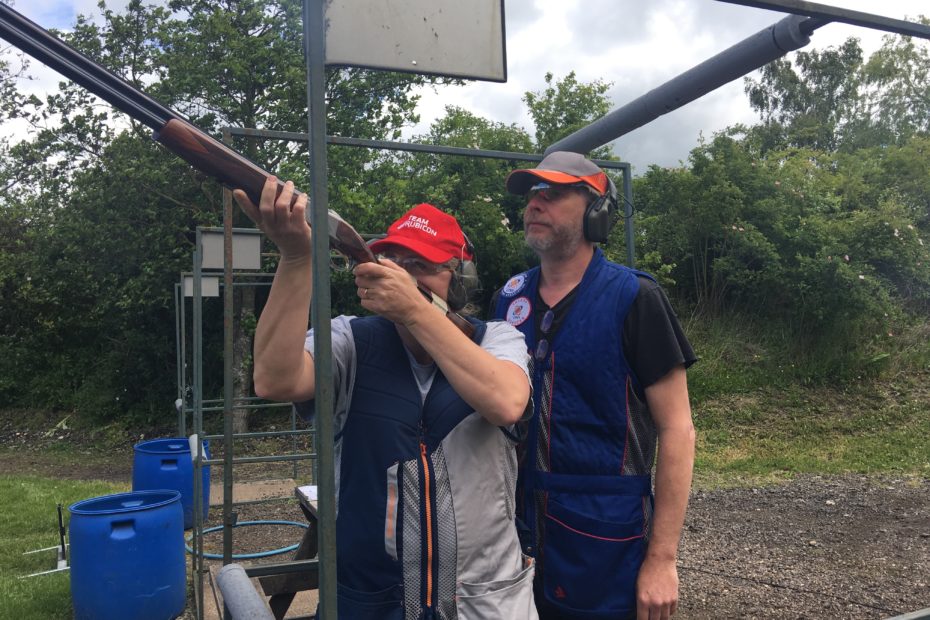Clay pigeon shooting is an enjoyable and popular hobby for shooting sports enthusiasts. It is an outdoor sport in which you are always in competition with yourself, and one that takes time and commitment to master. Both young and old shooters enjoy this activity while practicing their aim. However, there is a first time for everything so let us dive into some more details regarding the sport to give you a clear idea of what the game is all about.
About Clay Pigeon Shooting
Clay pigeon shooting sessions involve shooting moving clay targets using hunting weapons with unrifled bores. Clay shooting is a competitive sport played on a permanent site or temporary instalment such as fairs or straw bales. This recreational activity can be practised by anyone aged 12 and above. The first clay pigeon shooting lesson will give you an insight about how to practise the sport and become a future star in it.
Starting Clay Pigeon Shooting
- Safety Equipment
The first thing that you need to consider before starting clay pigeon shooting sessions is to buy gear to protect yourself. After all, you’ll be handling firearms, and for that, you need proper training and protection. Note that shooting during a session makes a lot of noise which is bad for your hearing, so wear earplugs or headphones to keep the sound from damaging your eardrums. A single shot at close range makes a noise of about 132-165 dB, which is equivalent to the noise an aeroplane makes while taking off. You must also wear protective eye goggles at all times; they will let you aim better while saving your eyes from sunlight and recoil damage.
- Shotgun Selection
Clay pigeon shooting sessions is practised with standard hunting shotguns. While any shotgun is suitable for recreational practice, shoguns with specific configurations are preferred for this sport. These special shotguns fall in three categories.
Trap Shooting Shotguns: These shotguns have longer barrels and more powerful chokes designed for short distances of about 40 m. The longer barrel allows for bullets to reach distant targets easily, as well as a more extended sighting surface. An instructor trains an individual on the use and handling of these shotguns as an essential part of a clay pigeon shooting lesson. These shotguns are usually lightweight, with multiple shot features.
Course & Compak Shotguns: For occasional clay pigeon shooters, a shotgun with a 70cm barrel is often used, while regular shooters prefer a longer barrel for a better sighting surface. These are called course and compak rifles, respectively, based on their barrel size and power. Short-barreled guns are perfect for close-range shooting within a designated course, while large barrel guns are usually used in open-air long-range clay pigeon shooting sessions.
Skeet Shotguns: Whenever the shooting target is at a distance of 10m or less, shotguns with ashort barrel of 70cm are mostly preferred. Just like course shotguns, these have smaller barrel diameter, but the difference is in the weight and shot range.
- Learning
As a beginner, taking clay pigeon shooting lessons helps you learn the basics of the sport. The first thing that an instructor will teach you is the careful handling of your firearm and then how to aim it accurately. An instructor will correct poor aim, poor posture, and poor handling, and they will teach you how to experience the game to its fullest. Once you’ve got the basics down, you can practise more and more to become a bright star in the sport.
- Disciplines
Sporting Clays: This is the most popular discipline among sport shooters; standard clay targets are used in other disciplines, while in this category, anything goes. Here predetermined goals are travelling in lines and at different speeds with changing appearance numbers.
Maze Clays Shooting: This is a new discipline that uses open field shooting with moveable release mechanisms that fire 6-9 traps at the same time. Shooters have different distances and angles at which to shoot.
Trap Shooting: This is the most basic and most common shooting discipline that is also used for clay pigeon shooting lessons by instructors for beginners. Targets are thrown in either single or double within a distance of 15 m in front of the shooter going in various directions, elevations, and speeds.
Conclusion
Clay pigeon shooting sessions are more exciting once you have the proper equipment and have learned the basics of the sport. For this purpose, there are individual training lessons given by instructors that will help you to sooner or later compete with professionals. You need practice and some time before you get a grip on the sport.
